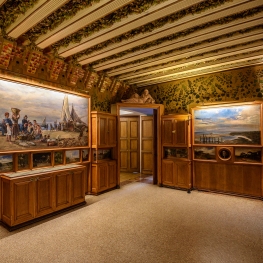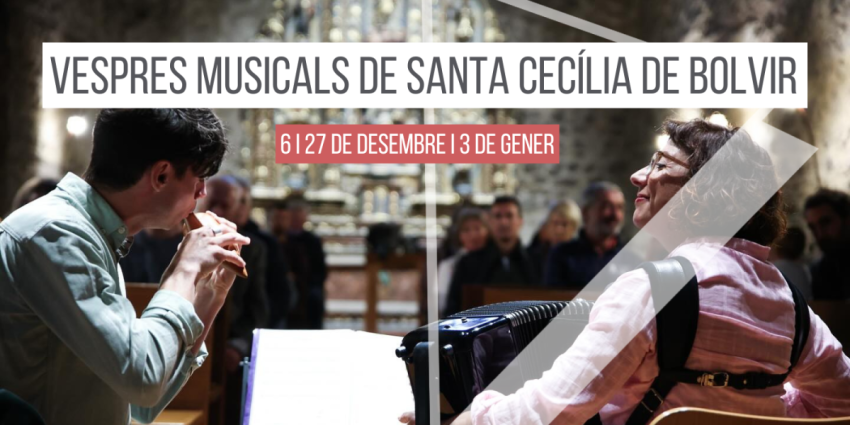Route of Modernism in Barcelona

Barcelona is a city of a thousand faces, a thousand colors, a thousand scents, flavors and a thousand thousand sensations. On this route Modernist Barcelona board, which revolutionized the city, not only artistically, but economically, culturally and socially. Currently, Barcelona is unquestionably a modernist city. As shown by the buildings that have been declared World Heritage Site by UNESCO.
Modernist Barcelona is the Barcelona of Gaudi, the Barcelona of Puig and the Barcelona of Domènech i Montaner. Modernist Barcelona is a walk to discover tangible (sculpture, architecture and painting) but also immaterial (literature and music).
Within the framework of celebration of the 150th anniversary of the adoption of the Pla Cerdà, we want to pay tribute to that this meant for the city and the entire artistic movement that, in parallel, accompanied him: modernism-
On this board the modernism route regardless Barcelona Gaudí, which deserves a route portion of the large number of contributions to the city.
The origins
The Barcelona of the Industrial Revolution, suffocated inside the walls, saw these need to be collapsed and the city could grow in an area where before had been forbidden to build. At that time, it was suggested a contest to find the best model for model development and model winner was Cerdà. This model was based on the construction of buildings that allowed chamfers draw parallel and perpendicular streets, while earned in quality of life, as it was thought in the amplitude of the streets and gardens to clean up the air and the brightness of the city.
 This process coincided with a political movement, cultural and economic boom in Catalunya that began with the Renaissance and consolidated with Modernism. Modernism incorporated innovative elements such as glass, wood, wrought iron and pottery, but above all, sought a Catalan nationalist and patriotic symbolism that demonstrated the importance of Catalan culture and history. It's a style you are looking for originality, creativity and anti-academic and gives special importance to decorativismo both inside and outside. There is also a repetitive like to incorporate elements of nature-floral, fish, insects, animals ... - by rolling figures and an exaltation of Gothic architecture and iconography, to remember the glorious past of Catalonia, for example, the use of the dragon.
This process coincided with a political movement, cultural and economic boom in Catalunya that began with the Renaissance and consolidated with Modernism. Modernism incorporated innovative elements such as glass, wood, wrought iron and pottery, but above all, sought a Catalan nationalist and patriotic symbolism that demonstrated the importance of Catalan culture and history. It's a style you are looking for originality, creativity and anti-academic and gives special importance to decorativismo both inside and outside. There is also a repetitive like to incorporate elements of nature-floral, fish, insects, animals ... - by rolling figures and an exaltation of Gothic architecture and iconography, to remember the glorious past of Catalonia, for example, the use of the dragon.
Architecturally speaking, but not only was used in buildings such as the Liceu, the Palau de la Musica, Casa Amateller, Casa Lleó i Morera, Casa Batllo, Casa Mila, Sagrada Família or many other basic points for the tourists visiting Barcelona , but also can be reflected in shopping-stores, ovens, pharmacies ... - or portals.
Ciutat Vella
We begin this route for the oldest part of the city, however, buildings and modernist elements incorporated.
Climbing the Rambles, at the corner of Carrer Sant Pau, we expect the Liceu majestically to explain the importance of the bourgeoisie in the modernist buildings, not only for their purchasing power, but by their cultural level. This building was remodeled and decorated by the sculptor Eusebi Arnau and the painter Ramon Casas during the years 1902 and 1903 and currently still serves to welcome internationally renowned operas as Aida.
 Rambles In number 91, we find the Mercat de Sant Josep, or better known as the Boqueria market. The entry made ??of wrought iron and colored glass is a spectacle. Come to discover the market with the most exotic assortment of the city.
Rambles In number 91, we find the Mercat de Sant Josep, or better known as the Boqueria market. The entry made ??of wrought iron and colored glass is a spectacle. Come to discover the market with the most exotic assortment of the city.
Later, in the number 82 of the Rambles, is the Casa Bruno Quadros, a former umbrella shop decorated with industrial. At number 77, we get the Genoese Doctor House, an old pharmacy and laboratory. In the 115, the Academy of Arts and Sciences and the Pharmacy 121 Nadal.
Without going any further, Canuda street, is the Barcelona Athenaeum, known for the large number of events related to Catalunya and culture in general, and very near the Portal de l'Angel, Montsió street, Café dels 4 gats, where artists were noucentistes as houses or Russiñol, paintings which can be admired at the MNAC. Enter into this Cafe and watch the undulating forms of the chairs and the famous "Tandem" the painter.
Finally, we end this part of the city with a masterpiece, declared World Heritage Site by UNESCO in 1998, the Palau de la Música Catalana, Domènech i Montaner. The facade, full of Catalan symbols again, we welcome guests, WHILE than when we entered, were absorbed by the beauty of the architecture lit by colorful glass dome hanging from the ceiling. The building was built to accommodate the Orfeo Català and currently still hosts concerts.
The Eixample
 As we have already hinted at the beginning, this is the quintessential modernist district, since its development coincided with the modernist movement. Rising along the Paseo de Gracia, no home islands containing any element modernist. The bank lanterns are all over the place. In the corner of Gran Via de les Corts Catalanes, we can see the Palau Marcet, a building that became the Comedy Theatre and now is a great film. But when we arrived on the island located between Paseo de Gracia, the Consell de Cent and Arago must make a stop for discovering the "Apple of Discord". They are about three buildings very close to each other struggling to know what is the most beautiful: Amatller House at Casa Batllo and Casa Lleó i Morera.
As we have already hinted at the beginning, this is the quintessential modernist district, since its development coincided with the modernist movement. Rising along the Paseo de Gracia, no home islands containing any element modernist. The bank lanterns are all over the place. In the corner of Gran Via de les Corts Catalanes, we can see the Palau Marcet, a building that became the Comedy Theatre and now is a great film. But when we arrived on the island located between Paseo de Gracia, the Consell de Cent and Arago must make a stop for discovering the "Apple of Discord". They are about three buildings very close to each other struggling to know what is the most beautiful: Amatller House at Casa Batllo and Casa Lleó i Morera.
First, the House Amatller, remodeled from an earlier building by Puig recalls a house has clear Flemish and Gothic Revival elements. On the downside, you can visit free temporary exhibitions throughout the year.
The House Lleó i Morera by Domènech i Montaner, it was also a reform of a previous home where interior decoration highlighted by the use of ceramics, furniture and stained glass style designed by the same architect.
 The Casa Batllo will be discussed in the modernist route dedicated to Gaudí.
The Casa Batllo will be discussed in the modernist route dedicated to Gaudí.
Near this triangle of landmark buildings in Aragon Street, Antoni Tàpies Foundation found. This had been the location of the Editorial Montaner i Simon, the company's family of Domènech i Montaner, the creator of the work. We recommend this the dated, combination of two of the modernist par excellence: the billet reddish-glass-shaped windows so that mimics a modernist factory building. The facade is topped by shaped aluminum threads that are distributed chaotically, work created by Antoni Tàpies.
We also highlight some modernist buildings of the Rambla Catalunya, as Casa Dolors Calm, Casa Fargas, Bolós Pharmacy and Casa Serra. The latter corner with Avenida Diagonal and was designed by Puig. Today we find the headquarters of the Barcelona Provincial Council.
Nearby, on Avenida Diagonal, between Roger de Llúria and Bruc, we receive Punxes House. This was a building commissioned by Puig Terrades sisters. Therefore also called "Casa Terrades". És a fantastic building that recalls the European Catalan Gothic, with six towers topped by spikes i 365 windows, one for each day of the year.
Off-Axis modernist
 Far from the backbone of the city that makes up the area of the Rambles and the Paseo de Gracia, we emphasize more modernist heritage.
Far from the backbone of the city that makes up the area of the Rambles and the Paseo de Gracia, we emphasize more modernist heritage.
For starters, a building recognized World Heritage Site by UNESCO: the Hospital de Sant Pau, Domènech i Montaner. This is another work of genius that combines art with functionality typical of a hospital that still works as normal, while guided tours are made daily.

In the area of Ciutadella Park you can visit other Modernista, which was built on the occasion of the Universal Exhibition of 1888 in the city. Again the billet has a great importance in the realization of the Arc de Triomf (Triumphal Arch), by Josep Vilaseca, and the Castell dels Tres Dragons (Castle of the Three Dragons) by Domènech i Montaner, Café - Restaurant of the Exhibition and currently, Barcelona Museum of Zoology.
What to do
Casa Vicens
Barcelona (a 3.2 Km)Discover Gaudí's first major work, a summer house filled with color, natural…
Where to eat
Restaurant Windsor
Barcelona (a 2.2 Km)The Windsor restaurant, located in Barcelona, is a benchmark of contemporary Catalan…
Fàbrica Moritz Barcelona
Barcelona (a 1.3 Km)The Moritz Factory Barcelona is a unique space, divided into three floors,…
Bar Muy Buenas
BarcelonaFew words better define Muy Buenas than "coherence." Purely modernist decor, restored…
Where to sleep
Aparhotel Atenea Barcelona
Barcelona (a 4.1 Km)The Aparhotel Atenea Barcelona, located in the heart of the Les Corts…
Aparthotel Silver
Barcelona (a 3.1 Km)Aparthotel Silver is one of the recommended establishments in Barcelona. It offers…
Alberg Centre Esplai, Fundesplai
El Prat de Llobregat (a 11 Km)Discover the Centro Esplai hostel, in the municipality of El Prat de…
Aparhotel Atenea Calabria
Barcelona (a 2.1 Km)The Calabria apartments offer a stunning location in the Eixample district of…





















